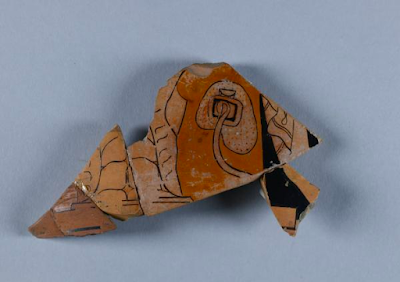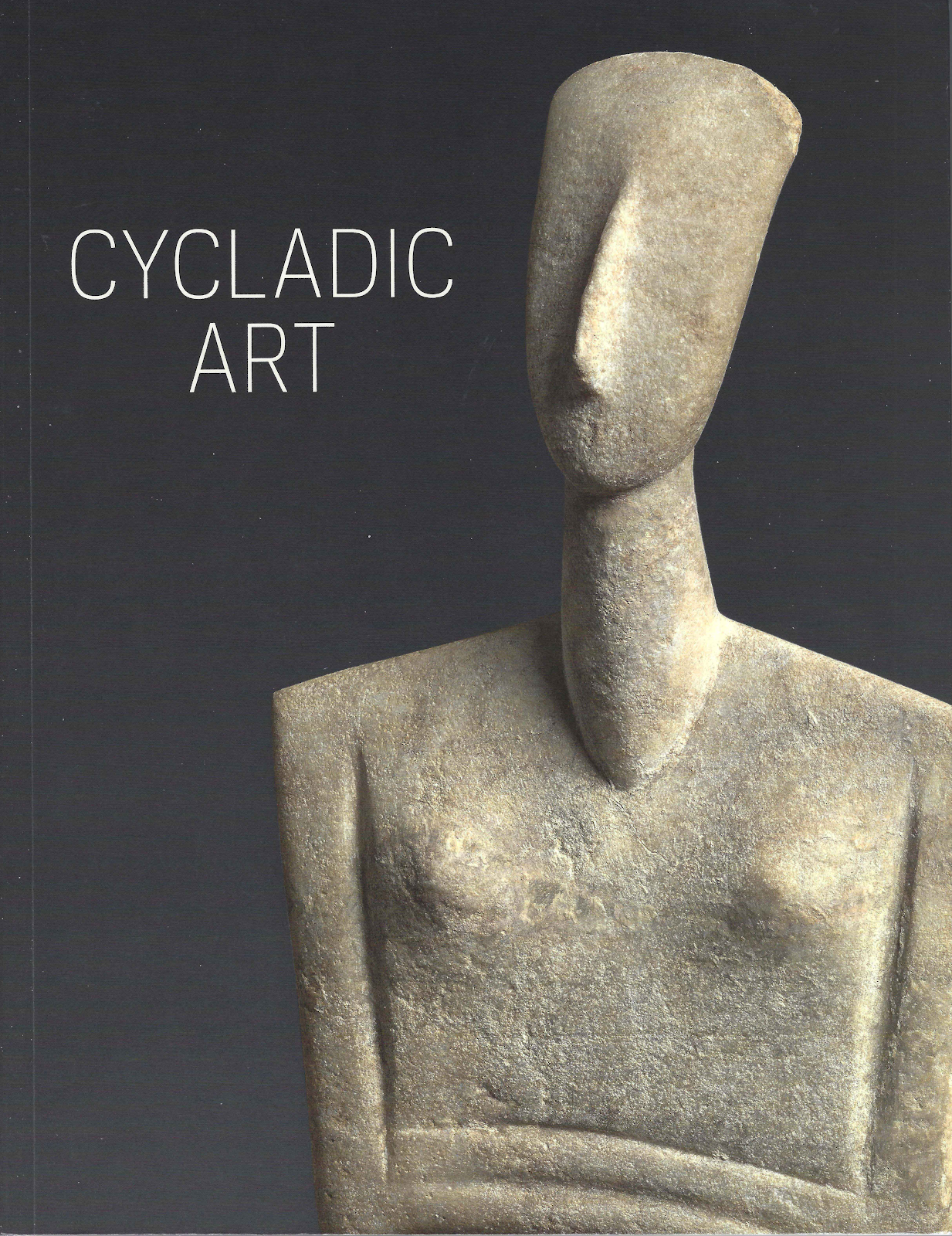 |
| Red-figured calyx-krater fragment attributed to the Kleophrades painter. Michael C. Carlos Museum inv. 2006.051.011B |
I have noted that Dietrich von Bothmer acquired a fragment of a cup from Edoardo Almagià and then gave it to the J. Paul Getty Museum: the rest of the fragments were supplied by Galerie Nefer (D.W.J. Gill 2022. "Context Matters: Fragmented Athenian Cups." Journal of Art Crime 27: 77–84. ).
A fragmentary calyx-krater attributed to the Kleophrades painter was presented to the Michael C. Carlos Museum by Bothmer in 2006. It is interpreted as showing the funeral mound of Hektor. Bothmer acquired the first fragment in July 1972, followed by further fragments in September 1978: the sources for these are unknown. However in 1978 another fragment was acquired from Bruce McNall of the Summa Galleries; this was followed by further fragments from Nikolas Koutoulakis in 1981, Edoardo Almagià in 1993, and Harry Bürki in 1994.
This network of names would suggest that the origins of this krater deserve further investigation. Tsirogiannis and I will be exploring a parallel network, also including Bothmer, in a forthcoming article.
Incidentally, a fragmentary calyx-krater showing the funerary mound of Achilles (?), and compared by Bothmer to the Kleophrades painter, had resided in the private collection of Cornelius C. Vermeule (BAPD 3197). Both kraters seem to have surfaced around the same time.





